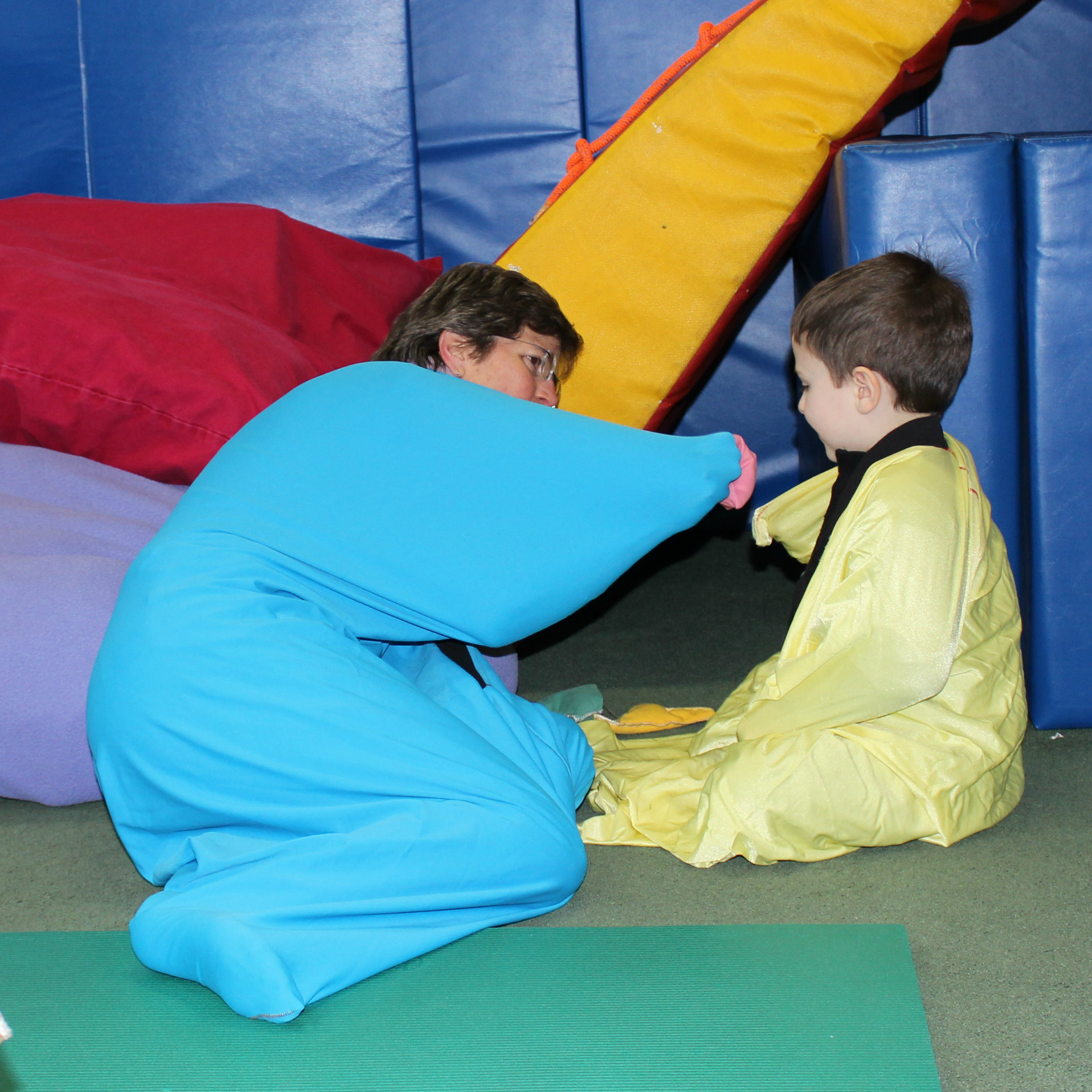“Should we be minions?” asked Liz Etheridge. Dressed in brightly colored body socks designed to enhance sensory awareness, she and her young client proceeded to use movement, costumes and swings in the OTC gym. Movement games are a favorite for the boy when he comes to work with Liz, a pediatric occupational therapist at the CES Occupational Therapy Center (OTC). Sessions might also include social skills, sensory experiences, exercising to music and rhythm, as well as developing functional hand skills.
Work with each client is individualized to address the individual’s unique set of needs. One family working with Noël Kesselheim, another pediatric occupational therapist at the OTC, initially required sessions to occur in darkness to avoid triggering their little girl’s light sensitivity and seizure disorder. She also had very limited tolerance for the stimulation of conversations, and other people in the room. She now works most days in full lighting and happily overlaps with other children.
It’s important to the OTC mission that every therapy at the clinic supports the environments and occupations that are a major part of the client’s daily life. For children and teens, these involve school, play, friendships and daily living skills.
Along with the sessions in the clinic, OTC therapists may meet clients in their homes and community, including school, playgrounds, restaurants, or grocery stores. By observing them in a range of settings, therapists at OTC can identify what supports or challenges their success, and are able to design therapy to meet individual needs. Occupational Therapy aims to help individuals develop the skills, strategies, and confidence they’ll need to function well in their life roles.
Part of the home programming is to involve parents, sitters and caregivers as active members of the team. “We really try to educate and support families to incorporate therapy activities and strategies into the daily routine.” says Noël. The OTC also supports families with a lending library of equipment and books, to allow them to “test run” a book, listening program or piece of equipment before they invest in one for home.
Because OTC therapists are evaluating in the multiple settings that children experience, therapy ties these different levels together. Something done at the playground will link to a skill needed in a classroom, or at home. “We have the access and the opportunity to treat more holistically,” says Noël. “We don’t treat anybody without evaluating them. You look at a person’s foundation. How’s their body awareness, their ability to imitate, their tolerance for sitting at the table, or handle the various materials that they are being asked to handle?” A child may be referred for a specific need such as their ability to hold a pencil or sit for extended periods in class; but evaluation often reveals challenges with larger sensory-motor issues.
Liz and Noël are always thinking about the need to keep therapy motivating and meaningful for their clients. Watching a child or teen engage, move forward and grow is a tremendous reward.
“I learn so much from my clients and the different ways they experience this world. When I meet with families, I feel the dedication, creativity and strength of people who are embracing life, with all its hard things. It’s just inspiring.” – Noël Kesselheim, OTR/L
Learn more about what inspires our team in the Collaborative for Educational Services 2015 Annual Highlights report, www.collaborative.org/sites/default/files/CES-2015-AnnHighlightsRept.pdf

